This hard cider recipe is an attempt to recreate a Dry English Cider and was originally posted on HomeBrewTalk. Traditional English ciders made in the south west of England were typically made with a blend of bittersweet and bittersharp apples that naturally contain high levels of tannin. These tannins give this cider dynamic and body.
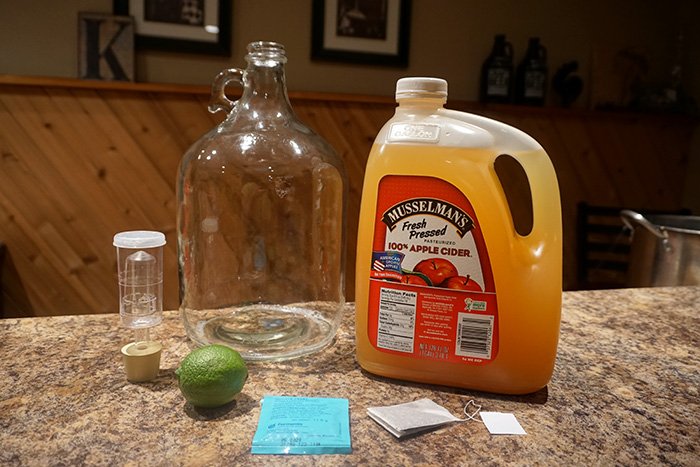
Because tannin is not a desirable flavor in sweet ciders, commercial juices and many orchard ciders available in the US will be made from sweet dessert apples that lack tannins. To compensate, this recipe adds tannin to the sweet cider using prepared black tea. Additionally, the juice of one lime is used to add acidity which brings balance to the cider.
Tannins are quite hard to measure as they are actually a mix of things rather than one chemical such as ethanol. Because of this, it is important to record the tannin addition process carefully so it can be recreated or tweaked in future batches.
Five Essential Pieces of Equipment





English Cider Recipe Directions:
1. First, sanitize all of your brewing equipment properly before beginning.
2. Take a specific gravity reading of your cider to determine the original gravity. Document this so you can calculate the final ABV later.
3. If you are using pasteurized store-bought cider, skip this step. If using fresh cider, add campden tablets to the sweet cider to stun wild yeast and bacteria. Wait approximately 24 hours for the campden to dissipate before moving to the next step.
4. Next, bring about 3 cups of water to a boil and add the tea bags. Allow the tea to steep for about 10 minutes before adding the juice of one lime. Allow for the tea to cool for a few minutes before pouring it into the carboy.
5. Take a hydrometer reading from the apple juice or sweet cider to discover the original gravity. A specific gravity of 1.045-1.050 is a great place to start. If you would like to raise the original gravity, consider using an apple juice concentrate as it will add sugar and flavor.
6. Next, add the yeast nutrient and juice into the carboy with an aggressive pour to help aerate the juice and mix the nutrient. Pitch yeast according to the manufacturer’s instructions and install an airlock on the carboy.
7. Place the carboy in a cool (60F-70F) environment and allow the cider to ferment in the primary until dry. Then rack the cider into a secondary and age the cider until it clears, usually 1-2 months.
8. Take a hydrometer reading at this point to measure the final gravity to calculate alcohol content.
9. Finally, bottle the cider with about 1 oz of priming sugar per gallon of cider for natural carbonation. Because the cider was bulk aged, most of the yeast will have settled out which will slow the carbonation process.
The final Dry English Cider tastes good after a few weeks in the bottle but just gets better with age!
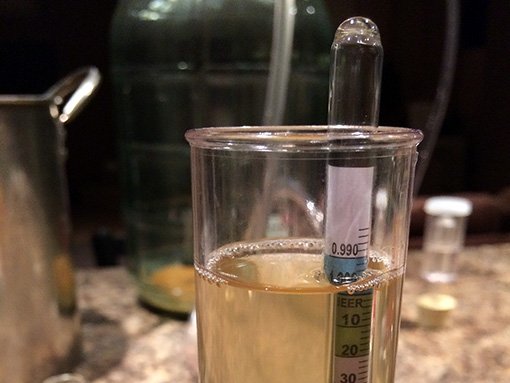
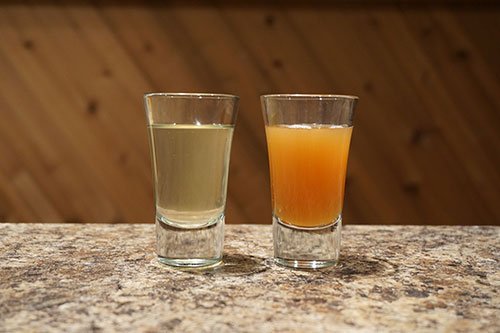
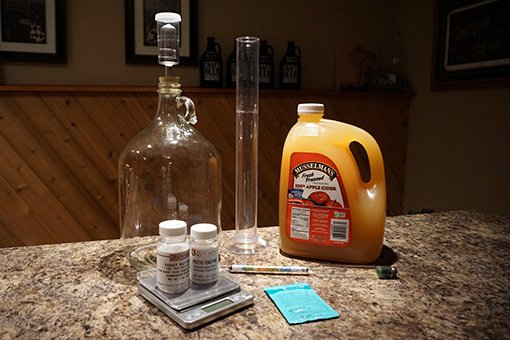
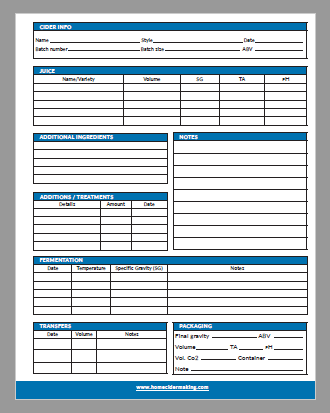
Gotta Remember that some Store Bought Juice will have Potassium …… or other Chemicals to preserve and thus inhibit a ‘desired’ yeast to do its thing. Ferment until ‘DRY’, what does this really mean? Also, taking a gravity reading one the juice then adding the ‘tea’ ( 3 cups water – alters the numbers, doesn’t it? What would be an ideal Final gravity number when all is said n done? I am looking forward to trying this and noticed your jugs are all Musselman, i read on their site that its straight pasturized- so NO chems, great! Juices like MOTTs etc add stuff. Cool. Oh, why the TEA? I lived in germany for 7 years and UK for 1, yes U.S. cider is like liquid jolly rancher. lol. I am definitely a Bulmers guy. Not to sound snide, i am a good bier maker but my ciders have been hit or miss and I wanna get it right.
Hi J,
Ferment until dry is basically means until there is no fermentable sugar left, around 1.000 SG. I guess it is geared more toward a flavor profile but its commonly used to describe a completed fermentation.
The tea should be added before taking the initial gravity reading so you can have an accurate estimated ABV at the end of fermentation. The tea is used to add tannin to the cider which provides flavor and mouthfeel. Most store bought apple juices are not made from traditional cider apples, so it helps to adjust the flavors.
The ideal final gravity should be around 1.000 at the end of fermentation but you can back sweeten to find your favorite flavor profile.
Cheers!
been using the Walmart Great Value brand for a While .. great just don’t get the Lite version – less sugar also great value has tart cherry and sometimes pear
I’m planning on trying this soon, I’m hoping to replicate the taste of Savanna dry cider.
For proper carbonation, should the bottles be kept in the same 60-70 degree environment or is the fridge ok?
I would need two carboys for the secondary aging?
Thanks!
One carboy for the initial and one for the secondary aging I mean.
My cider making “lab” is outside wifi reach. sure would be nice if you gave us links to printable recipes.
Was wanting to break this down for a smaller 1 gallon batch. Any recommendations on how much of one packet of S-04 yeast to use, and how much yeast nutrient is added?
Hi Mike,
For a one gallon batch I typically use about 1/3 of the packet although some people will use the whole thing. More yeast will result in a faster fermentation. For the yeast nutrient, please see the dosage recommendations on the package as it varies by manufacturer, although 1 tsp per gallon is fairly common.
Thanks! Your are absolutely correct, when the yeast nutrient came, clear instructions on the bag. Thanks for the help.
Sorry again. When racking into the secondary, do you recommend a campden tablet then? I used pasteurized cider(same cider in your photos actually) but wondered if after fermentation I need to add one to the secondary? Thanks!
been using the Walmart Great Value brand for a While .. great just don’t get the Lite version – less sugar also great value has tart cherry and sometimes pear
I’ve seen similar recipes for making apple wine. What is it that ensures that this turns out as cider?